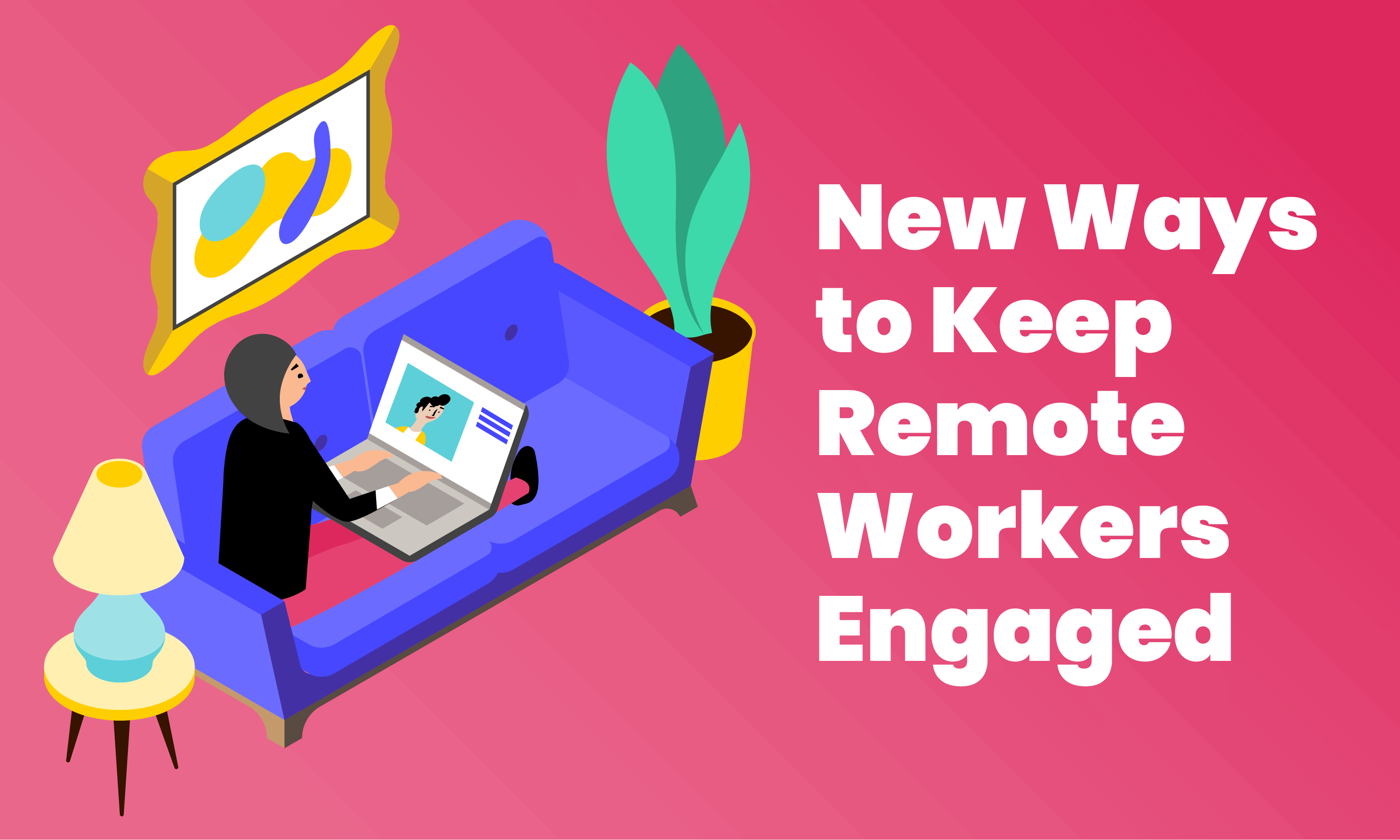As XPLANE’s Employee Experience Manager, I recently found myself drawn to a workshop about engaging remote workers at the 2019 Culture Summit in San Francisco.
Coming from a company where remote work is part of our day-to-day operations, I was excited to glean tips that would help our remote workers feel more connected.
Judging by the packed room at the Culture Summit workshop, I wasn’t the only one.
A Trend That’s Here to Stay
According to GlobalWorkplaceAnalytics.com, the number of people who work at home (or at the library or the coffee shop)—among those who are not self-employed—has grown by 159% since 2005, more than eleven times as fast as the rest of the workforce.
Over the last 5 years, remote work has grown 44%. And over the last 10 years, it has grown 91%.1
With approximately 4.7 million U.S. employees (3.4% of the workforce) now working from home at least half the time, it’s clear this trend is here to stay—and we need new ways to stay connected with these valuable remote workers.
New Ways of Thinking, New Challenges to Solve
Led by leadership trainer and coach Robleh Kirce, the workshop (“How to Help Your Employees Work Together Anywhere”) explored practical ways to help your remote teams communicate, self-regulate, and add to your company’s culture.
Head of coaching at LifeLabs, Kirce holds a doctorate in industrial and organizational psychology. Engaging and encouraging, Kirce shared three general thoughts about remote work that particularly resonated with me:
- Start referring to your remote workforce as “distributed.” “Remote” means excluded; “distributed” does not. Other acceptable terms are “flexible work,” “flexible workers,” and “networked.”
- Remember that work is not a place—it’s an activity.
- Communication, belonging, trust, fairness, and growth are five key areas where issues arise with distributed teammates.
XPLANE’s Tips for Keeping Remote Workers Engaged
Through discussions with other workshop participants, I was encouraged to learn that XPLANE is ahead of the curve when it comes to engaging distributed employees.
While there’s always room to improve, XPLANE has successfully implemented a few methods that might help you get the ball rolling if you’re just starting out learning to engage your distributed team members:
 Default every meeting to “video on.” At XPLANE, we’ve elevated “calling in” by consistently using video for meetings. Many of our collaborative conversations happen through tools like Zoom, Skype, Google Hangouts, and MURAL. Whether we’re in the office or are working from home, this helps us feel like we’re all in one room. When it comes to these types of interactions, Kirce advised that “frequency beats length”—and I completely agree.
Default every meeting to “video on.” At XPLANE, we’ve elevated “calling in” by consistently using video for meetings. Many of our collaborative conversations happen through tools like Zoom, Skype, Google Hangouts, and MURAL. Whether we’re in the office or are working from home, this helps us feel like we’re all in one room. When it comes to these types of interactions, Kirce advised that “frequency beats length”—and I completely agree.
 Support autonomy. XPLANE hires adults and expects employees to behave like adults. We call this Organizational Adulting. (To learn more about this unique point of view, check out this series.) Trust and transparency are part of our culture—and this extends to our distributed employees, who are given clear goals and metrics and are trusted to deliver on these. Clear KPIs mean clear guardrails for reliable employees.
Support autonomy. XPLANE hires adults and expects employees to behave like adults. We call this Organizational Adulting. (To learn more about this unique point of view, check out this series.) Trust and transparency are part of our culture—and this extends to our distributed employees, who are given clear goals and metrics and are trusted to deliver on these. Clear KPIs mean clear guardrails for reliable employees.
 Pay attention to distributed employee feedback. At the workshop, Kirce shared that issues raised by distributed employees are generally an early warning sign of issues that others are facing. At XPLANE, our quarterly Employee Experience Survey allows every employee to offer feedback anonymously, ensuring an equal voice for all. We are, however, able to see when feedback is from a remote location—and we give more weight to this feedback when it comes to addressing issues.
Pay attention to distributed employee feedback. At the workshop, Kirce shared that issues raised by distributed employees are generally an early warning sign of issues that others are facing. At XPLANE, our quarterly Employee Experience Survey allows every employee to offer feedback anonymously, ensuring an equal voice for all. We are, however, able to see when feedback is from a remote location—and we give more weight to this feedback when it comes to addressing issues.
New Tips for Keeping Distributed Workers Engaged
I’m always looking for ways to make things run more smoothly, so I’m excited to roll out a couple of new ideas for engaging distributed workers at XPLANE. These tips might be helpful as you ramp up efforts to engage remote workers at your workplace:
Provide communication training. Employees don’t always realize that non-verbal communications fail to translate over video conference. Keep these remote communication tips in mind:
- Silence in a video call doesn’t necessarily mean agreement (as it does for in-person meetings).
- If you’re hosting a remote meeting, be sure to invite everyone to participate and ask or answer questions.
- A big one: Remember that networked employees do not hear information as frequently as people in the office people do. Networked employees miss post-meeting follow-up conversations and even casual water cooler chats. Managers and meeting hosts therefore need to follow up with distributed employees in informal ways by sending meeting minutes, cc’ing distributed workers on follow-up emails, or making notes to chat about these things in the next 1:1.
Increase awareness of distributed teams. XPLANE uses our own low tech social network in our physical office to bring visual awareness of our extended teams. This is a fun activity where you make social connections, similar to social media profiles, in physical form and connect similar interests with yarn. The exercise reminds employees in our physical office that there are others who are not seeing and hearing the nuances of conversations, making these distributed employees less likely to be forgotten or excluded. You can find our social network tool here.
Distributed Workers Are Part of Your Work Family
Remember, the future of work is not a physical office. Your distributed workers are an important part of your success, so be intentional about engaging them—full-time, part-time, and contract workers all. Treat them as you would your in-house employees.
And with all things, practice! When you’re reaching out to distributed workers, you might not get it right 100% of the time, but the more you practice, the more your actions become habit.
For more information on the distributed worker experience, check out these XPLANE resources:
- Remote Employee Experience
- How to Successfully Manage Globally Dispersed Teams While Wearing Slippers
1 “Latest Telecommuting/Mobile Work/Remote Work Statistics.” Updated August 16, 2019.
